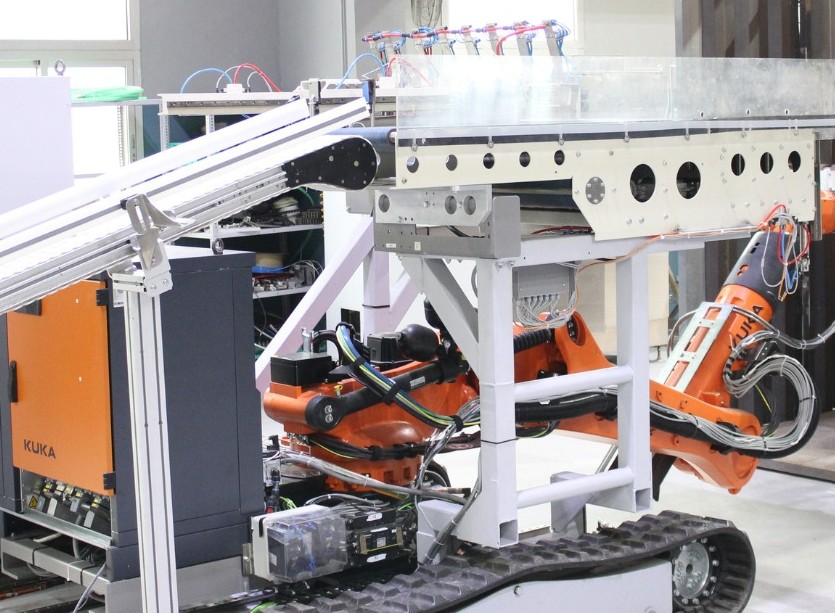How May Robotic Automation Affect the Physical Layout of a Parts Warehouse

Warehouse automation saw nearly double-digit growth among merchants with the rise of e-commerce. The automated guided vehicle (AGV) category of traditional warehouse automation was expanding the quickest.
AMRs, or autonomous mobile robots and robotic warehouse automation system are essentially extremely intelligent AGVs. The AMR market is expanding much more quickly than more conventional kinds of automation. Artificial intelligence is used by autonomous mobile robots for sophisticated perception, location, and navigation. These robots follow a dynamic routing system. AMRs vary in a number of ways, including the processes they support and the way they coordinate workflows inside a facility. However, it is accurate to say that the vast majority of deployed units today enable the type of picking carried out in e-commerce warehouses.
Mobile robots for e-commerce come in two main varieties. A low-to-the-ground robot transfers the items to the pack station in a goods-to-man fashion by squeezing under a cubicle rack in the warehouse. At the packing station, the bot turns such that the picker is facing the slot containing the appropriate item. The picker chooses the item or products and places them in a carton as the slot lights up. The bot then returns to the centre of the warehouse until they are required once more. This process smoothly takes place with fulfillment software. Collaborative robots are another technology that assists warehouse personnel as they move around the space.
Today, a lot of warehouses constructed in the US are 32 feet tall. As you can see from the robot images up top, the latest robotic systems are not made to handle picking in racking with tall walls. The maximum height of the mobile racks that are transported by items to man bots is 6 feet. A short worker may reach for a pick up to a height of eight feet thanks to the collaborating robots that support the racks.
The labour shortage in the warehouse industry is severe. Government payments made throughout the outbreak made it worse. However, even without that, working in a warehouse is a low-paying, physically demanding profession. Working at a warehouse in the summer can be uncomfortable because few warehouses have air conditioning. It is now more practical to install air conditioning in warehouses thanks to the goods-to-man robots. Workers are not permitted in the core area of the warehouse where these robots are operating until the robots are turned off. The warehouse does not require air conditioning in this area.
Robotic automation affects the physical layout of a parts warehouse in multiple ways-
Real Time Inventory Solution- The numbers are frequently incorrect by the time a warehouse employee receives a pick ticket, retrieves the item, and manually enters the data into the manhttps://www.greyorange.com/what-is-greymatter/ual inventory monitoring system. However, updating the inventory warehouse management system is instantaneous with an automated system. When a worker selects a product, the WMS system automatically receives this information and updates it in real time.
Improve Storage Capacity- When you employ warehouse management software, you can discover that your shelves could have held more inventory. Based on the size of the bins and the quantity of stock held in the warehouse, the WMS provides each product a unique position and bin number. While the more popular commodities can be maintained on lower shelves and close to the shipping area, the less used inventory is sometimes placed on higher shelves or in awkward locations inside the warehouse.
Reduce Product Damage- Implementing an automated warehouse management system necessitates following tight protocols when handling products. The danger of product damage and waste production in the warehouse will be significantly reduced by predictable, consistent handling of products.
Enhance Warehouse Efficiency- Warehouse managers can find inefficiencies and fix them thanks to contemporary warehouse management software solutions for warehouse management. They display the length of time it takes the typical warehouse employee to pick orders. They also reveal which employees are the most productive and which ones require additional training.
Using robotic automation in warehouse system is revolutionary step to take. Although the initial setup of the equipment and software for warehouse management may require some work, in the long term you will have increased operational effectiveness and significantly lower expenses.
Thanks for helping to keep our community civil!
This post is an advertisement, or vandalism. It is not useful or relevant to the current topic.
You flagged this as spam. Undo flag.Flag Post


